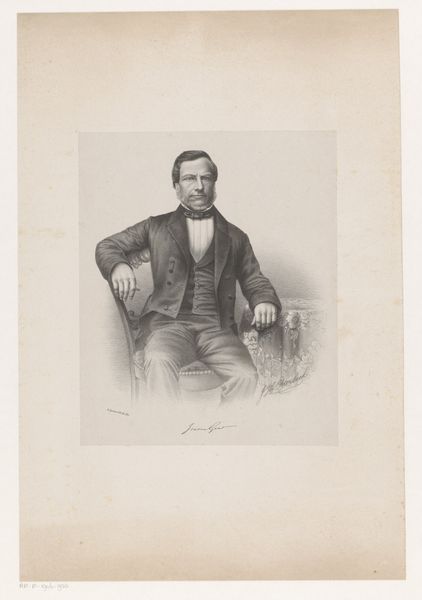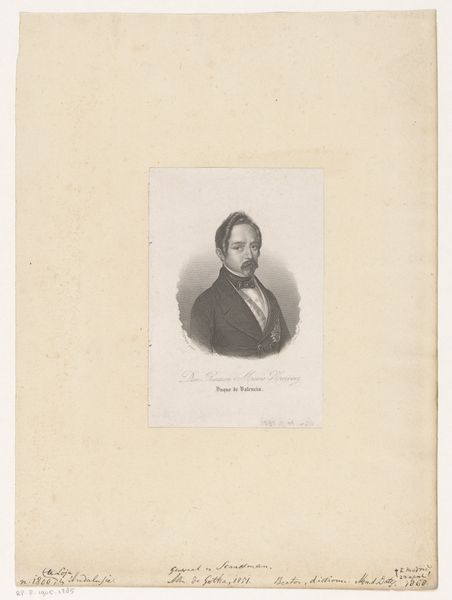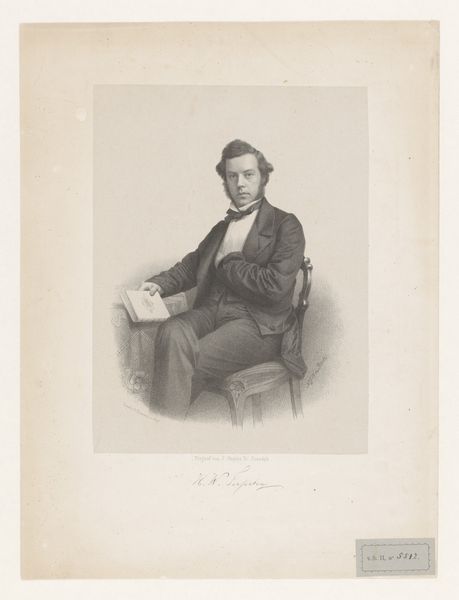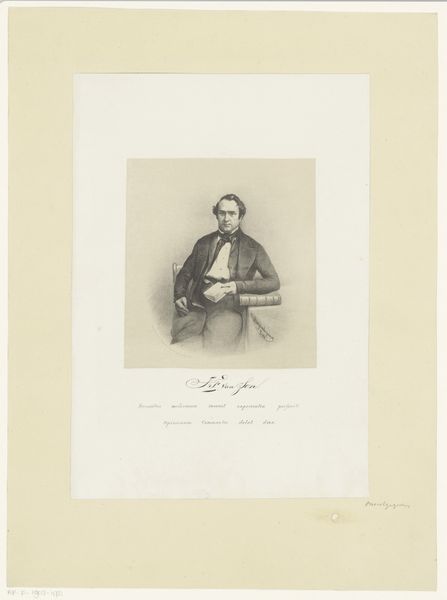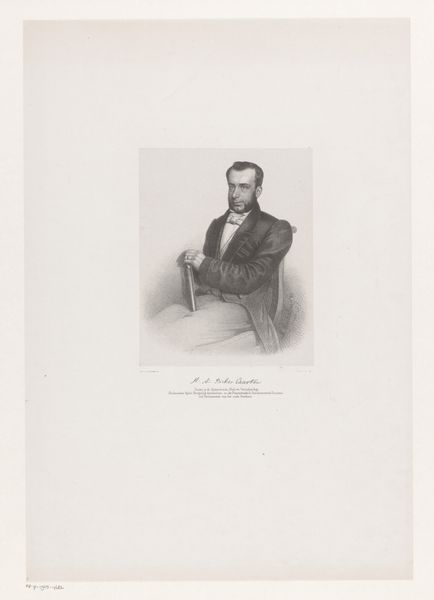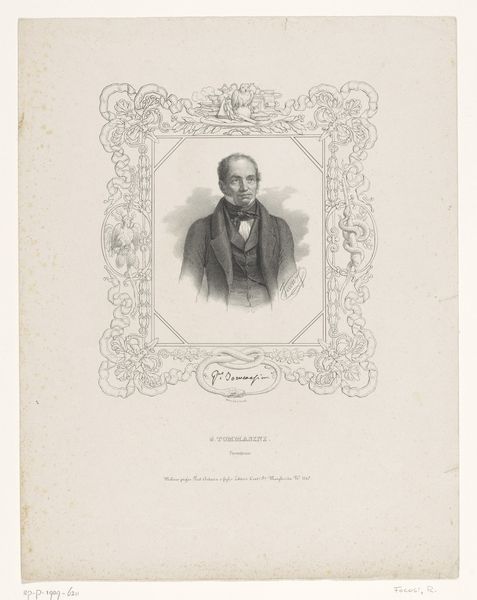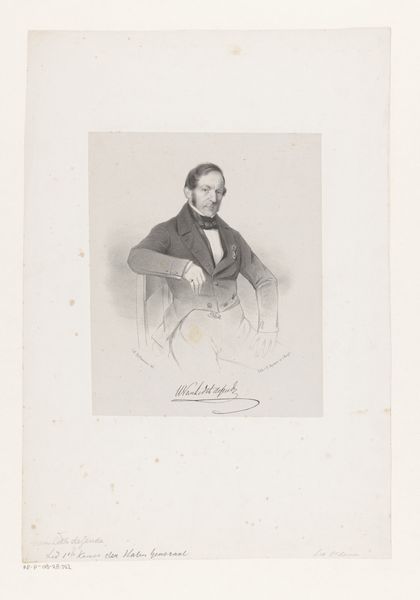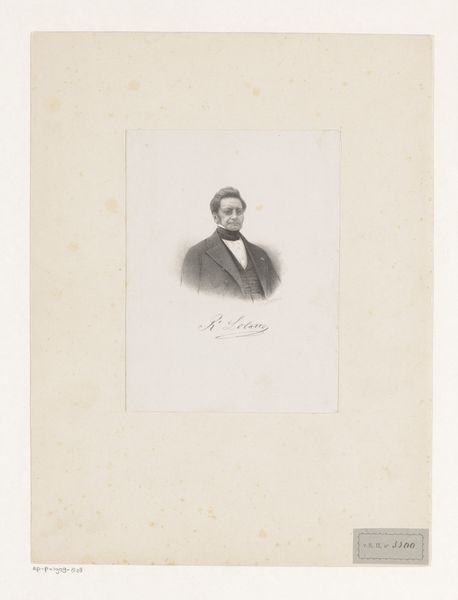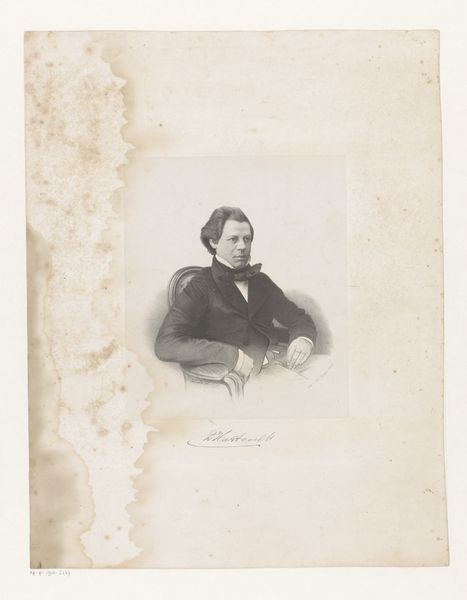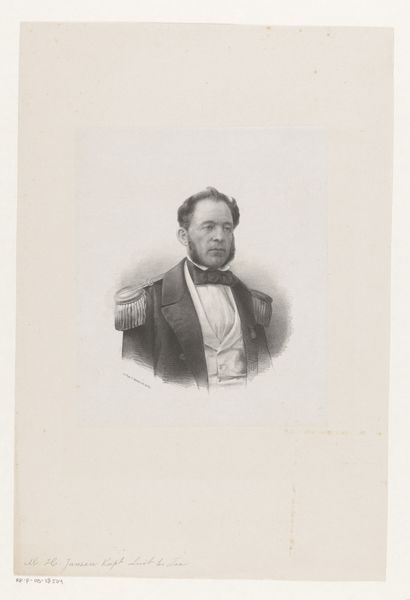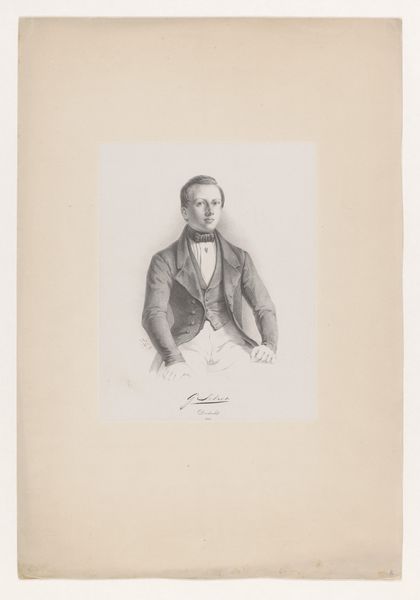
drawing, pencil
#
portrait
#
pencil drawn
#
drawing
#
light pencil work
#
pencil sketch
#
pencil drawing
#
pencil
#
academic-art
#
realism
Dimensions: height 338 mm, width 255 mm
Copyright: Rijks Museum: Open Domain
Editor: Here we have Leendert Springer’s pencil drawing, "Portret van F.J.E. van Gorkum," created sometime between 1841 and 1894. The fine detail achieved with pencil is striking. How do you interpret this work in the context of its time? Curator: Well, this portrait, while seemingly straightforward, offers a fascinating glimpse into the construction of identity and power dynamics within 19th-century European society. The sitter, presumably a member of the elite judging by his military attire, is presented with a level of controlled dignity. Consider how the portrait functions to reinforce existing social hierarchies. Editor: Are you suggesting the artist intended to convey this power dynamic? Curator: Intention is a tricky thing. But certainly, portraiture of this kind always served to communicate status. It's also worth considering what's absent: any sign of the social and political upheavals that were happening. Where are the working classes in images like this? What narratives are being excluded? Editor: That's a perspective I hadn't fully considered. It makes me think about whose stories get told and preserved through art. Curator: Exactly! This image then becomes part of a broader discussion on visibility, representation, and the biases inherent in historical documentation. It encourages us to think critically about the power of portraiture in shaping collective memory. Editor: Thank you. Looking at the image in terms of broader social and political conversations definitely elevates the conversation above its purely aesthetic value. Curator: Indeed. The drawing isn't just a depiction; it's a statement—one that demands we question its historical context and social implications.
Comments
No comments
Be the first to comment and join the conversation on the ultimate creative platform.
